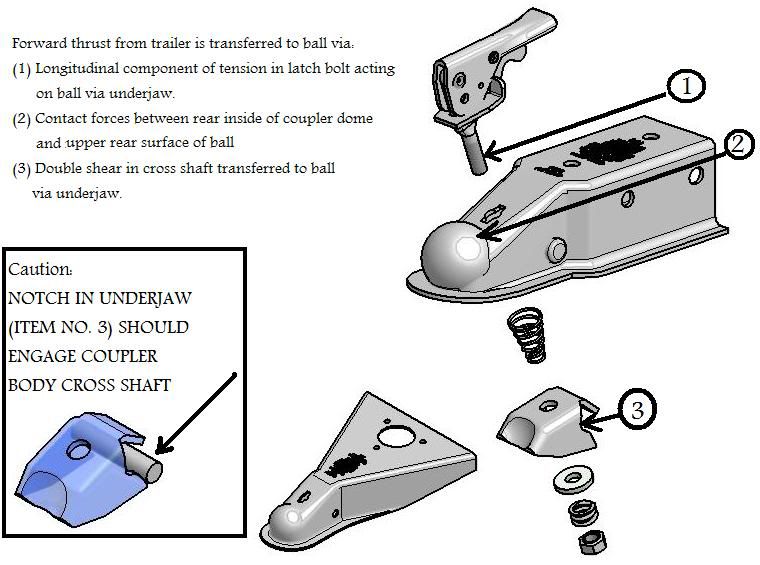JBarca wrote:
I will also attempt to explain in more detail where we believe these higher forces are originating from with the Anderson unit and how they are larger then the TW pressing down on the ball coupler. These higher WD forces in the chains can cause the TT ball coupler to rise up and stop rising only by when all the vertical clearance inside the coupler is reached.
Anyone else is also welcome to help show this too. (Ron, hint hint :))
This all originates with what some feel are large forces in the WD chains created by the Urethane springs during WD. If the chain forces are high enough they will overcome the down force of the TW and the coupler will cam itself up.---
John, thanks for the invitation to join in, but, if I correctly understand what you are saying, I must respectfully disagree. In particular, I would disagree with the last sentence above.
I will re-use the image from my last post to try to explain my thoughts. The coupler illustrated below is typical of many I've looked at. Forces may be transmitted between trailer and ball in two ways.
1&3) Force between trailer and ball can be transmitted indirectly via the latching clamp ("underjaw", in the schematic below).
2)
IF there is a contact surface between the inside of the coupler and the upper rear of the ball, a longitudinal force can be transmitted via this surface. I say "IF", because the shape of the ball socket on some couplers does not appear to provide any surface which can contact the upper rear curved face of the ball.
Any force transmitted to the upper rear surface of the ball will have an
upward component of reaction tending to push the coupler upward relative to the ball. (I believe this is the point you are making.) Any force transmitted to the lower rear surface of the ball will have a
downward component of reaction tending to push the coupler downward relative to the ball.
After looking at different coupler designs, it is my current opinion that, for the majority of couplers, the net reaction of ball against coupler will tend to push the coupler
downward relative to the ball. I think it is unlikely that the chain forces in the Andersen hitch would cause the coupler to rise upward relative to the ball. And if there were a coupler configuration which did result in a net upward lift, I doubt the magnitude of the lifting force ever would exceed the downward force due to tongue weight.
OTOH, if I mis-understood your point -- then I don't have to be disagreeable. :)

